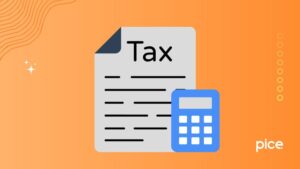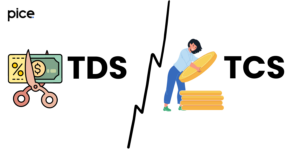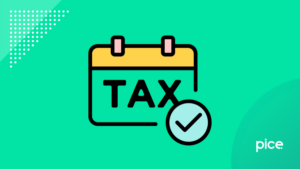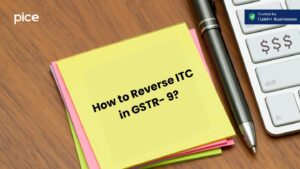GST Challan Payment: Meaning, Benefits, Steps to Generate & Pay
- 21 Jan 25
- 14 mins
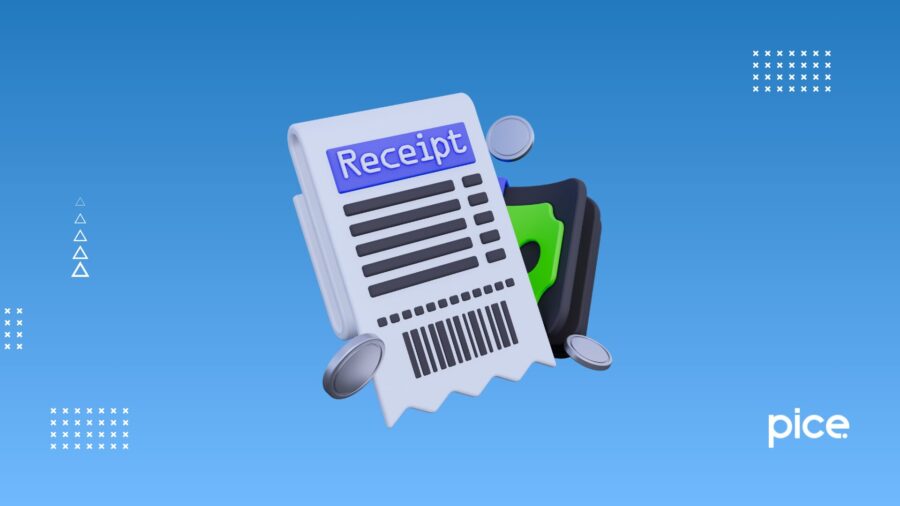
GST Challan Payment: Meaning, Benefits, Steps to Generate & Pay
- What Is GST Challan?
- GST Payment Processes for Different Taxpayers
- What Are the Modes of GST Payment?
- Key Tips for GST Payments
- Benefits of GST Challan Payment
- How to Generate a GST Challan on the GST Portal?
- How to Make GST Payment Online?
- How to Make Offline Payment of GST Challan?
- How to Check GST Challan History?
- What Is the Time Restriction to Complete the GST Payment?
- Interest on Late Payment of GST
- Conclusion
Key Takeaways
- GST Challan: Essential for paying GST dues and ensuring compliance.
- Payment Options: Pay online via the GST portal or offline at banks.
- Timely Payments: Avoid penalties by meeting payment deadlines.
- Late Payment Interest: 18-24% interest applies for delays or wrong claims.
- GST Portal Tools: Track payments, view history, and get real-time updates.
If you are a self-employed individual or business owner directly involved with the supply or purchase of goods and services, it is essential to learn how to complete a GST Challan payment.
Furnishing GST on time is a compulsory task for entrepreneurs and professionals across India. To streamline this procedure, the Indian Government offers both online and offline GST settlement methods.
In this blog, we will guide you through the steps involved in making GST payments and discuss the advantages of adhering to business compliance guidelines. So let us begin without any further delay!
What Is GST Challan?

The GST Challan denotes a crucial document that allows taxpayers to settle their GST dues. Its main objective is to streamline the payment method by giving business owners a set format for specifying their due payments. You can generate a digital e-challan or PMT-06 challan online while filing a GSTR-3B return. This step can make the whole tax-paying procedure simple and hassle-free.
GST Payment Processes for Different Taxpayers
More or less, the GST challan payment procedure remains similar for different taxpayers. Whenever there is enough cash balance in your electronic credit ledger, you do not have to worry about making any payments separately.
Otherwise, you must issue a GST challan to deposit the required amount or more into the cash ledger, utilising various prescribed payment modes.
Below, you can go through the payment procedures for different taxpayer categories:
Regular Taxpayers
Regular taxpayers are required to issue the PMT-06 challan to deposit money towards their cash ledger. To find the details about the same, you can refer to the Form GSTR-3B. Proceeding further, you can request a challan and submit payments either online or offline while uploading GSTR-3B particulars.
Quarterly Taxpayers (QRMP Scheme)
Quarterly taxpayers are those who have already availed of the QRMP Scheme under GST. These individuals are required to pay GST in the first 2 months within a quarter by directly drawing the PMT-06 challan. During the third month, they must file the GSTR-3B to settle the remaining dues.
For the first and second months of every quarter, a QRMP scheme taxpayer needs to settle the GST amounts within the 25th of the upcoming month. While executing the payment, they must pick 'Monthly Payment for Quarterly Return' as the option and select among either of the following permitted payment methods:
- Self-assessment Method
- Fixed Sum Method
If you choose to pay a fixed sum each quarter, you won't owe interest as long as you pay the full amount by the due date of the second month of the quarter. On the other hand, if you select the ‘Self-Assessment’ method, you will be obligated to pay interest on any unsettled tax that was not paid by the deadline.
Nil GST Return Taxpayers
These are the GST-registered business owners or individuals who do not have any purchases or sales for a relevant tax period. This taxation cycle can be either for a quarter or a month. In these instances, you do not have to draw a challan or initiate any payment.
Composition Scheme Taxpayers
If you have opted for the composite scheme, you must mention all your sales and turnover details for every quarter using a special challan, CMP-08. It is a separate form only for taxpayers whose turnover is less than ₹1.5 crore.
What Are the Modes of GST Payment?
GST payments can be completed by following different methods. These options are extended by the GST Council to ensure the safety, flexibility, and convenience of the taxpayers.
Below, you can find an overview of the valid payment options:
- Online Payment via GST Portal
Step 1: Complete the login procedure. To access your GST account online, enter the login credentials and sign in to your account.
Step 2: Go to the ‘Services’ tab and select ‘Payments’. Next, you must select the option ‘Create Challan’.
Step 3: Select the applicable tax heads and specify the payment values.
Step 4: Select a valid mode of payment. You can choose among NEFT/RTGS, internet banking, or a credit/debit card.
Step 5: Complete the transaction by saving the CRN or Challan Reference Number for future use.
Points to Remember
- You can see updates regarding any online payment in your electronic cash ledger almost immediately.
- It is crucial to finalise initiated transactions in one sitting when generating GST challans without logging in.
- If you are using the NEFT/RTGS method, you will have to issue a UTR or Unique Transaction Reference Number by contacting your bank. Linking this number with your payment during the challan submission procedure is necessary to ascertain hassle-free reconciliation.
- Bank Payment
Step 1: First, log in to your GST portal and generate an e-challan.
Step 2: Take out a copy of the challan and visit the nearest branch of an authorised bank.
Step 3: Complete the GST challan payment using a cheque, demand draft or cash.
Step 4: Collect a confirmation slip from the bank authorities as proof of payment.
- Over-the-counter (OTC) Payment
For this method, again, you need to generate a challan by visiting the official GST portal. Then you must visit an authorised bank’s branch with the challan. After visiting, you can pay through cash or cheque and collect the acknowledgement once the transaction is completed.
Note: OTC payments are valid for GST-due payments up to a maximum of ₹10,000.
- Unified Payments Interface (UPI)
To complete a transaction through UPI apps, you have to visit the GST portal first. Next, follow these steps:
Step 1: Select ‘UPI’ as your mode of payment.
Step 2: Open a UPI-backed mobile application to complete the fund transfer to your electronic cash ledger.
Step 3: Save the transaction ID and other details for future use.
Key Tips for GST Payments
These are some crucial points to consider while you are handling GST challan payments:
- Verify Payment Limits
You have to be careful about transaction limits. This is specifically true for vendors or business owners who primarily rely on over-the-counter payments.
- Save Receipts
You must keep a copy of your previous GST payment confirmations. It helps to adhere to compliance purposes and also assists with accounting.
- Track the Due Dates
Late fees and penalties are charged by the GST authorities if you make payments after the deadline. Therefore, to ensure you never miss an important update, be sure to monitor deadlines and enable notifications on the GST portal.
Benefits of GST Challan Payment
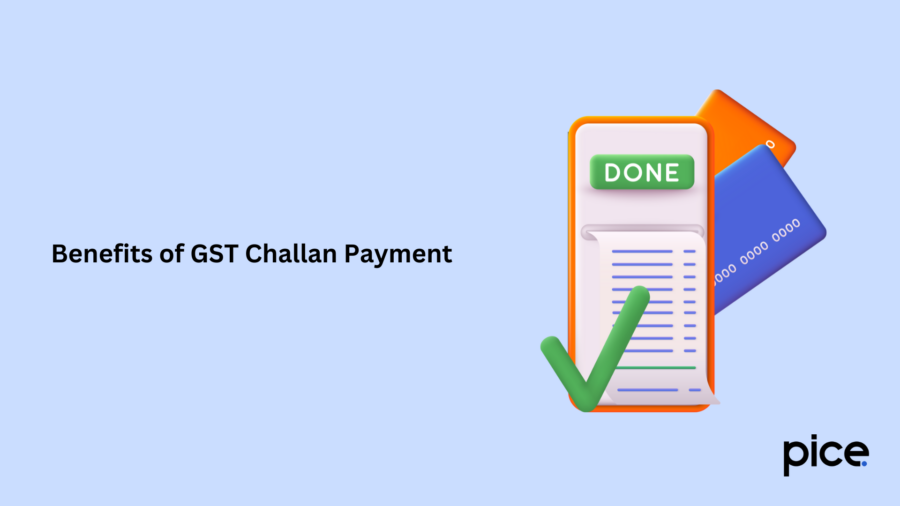
Some vital advantages of utilising GST challans for the payment of outstanding taxes have been discussed below:
- Easy Procedure
The GST challan payment can be completed very quickly and involves only a few steps. Moreover, you do not have to visit any particular branch or office. You can complete the whole process from your office or home.
- Fully Secure
When you pay your GST dues online, the transaction details stay completely encrypted. This minimises the instances of bank account hacking or fraud unless you are sharing any transaction-related details voluntarily with someone.
- Real-Time Effect
As soon as you receive a payment confirmation from your bank, simultaneously you can verify the payment status through your GST account. This feature is quite helpful for businesses, as now it is possible to keep accurate records of transaction history and therefore run operations following all the legal guidelines.
- Increased Flexibility
You can complete your GST challan payment through multiple options like RTGS, NEFT, credit cards/debit cards, etc. It enables you to choose a path that works best in your case. However, you must gather knowledge about the requisite documents before getting started with the payment process.
How to Generate a GST Challan on the GST Portal?
There are mainly 2 methods to generate a GST challan online. You can either do it by logging in to your GSTIN account or without completing the login process. Both the procedures are somewhat similar.
Generating a GST Challan Before Logging in
If you decide to issue a challan before signing in to your GST account, make sure to follow these steps:
Step 1: Open the homepage of the GST portal and move the mouse pointer to the Service tab. Next, go to ‘Payments’ and select the ‘Challan’ option.
Step 2: Provide the details of the temporary user or their GSTIN or specifications of the tax return preparer or UN authority. Next, you will be prompted to fill out a CAPTCHA code.
Step 3: Mention the values for the different GST heads: CGST, SGST and IGST as applicable. After this, continue to fill out the bank account details, if needed.
Step 4: Re-type the GSTIN of the concerned user or other ID to generate the challan. Following this hit the 'Proceed' button.
Step 5: Click ‘Download’ to save a soft copy of the e-challan on your computer, laptop or phone.
Generating a GST Challan After Logging In
If you prefer to generate a GST challan after logging in to a person's GSTIN account, you must navigate to the 'Create Challan' button given on the dashboard itself. Following this step, the rest of the instructions remain the same as discussed above.
How to Make GST Payment Online?
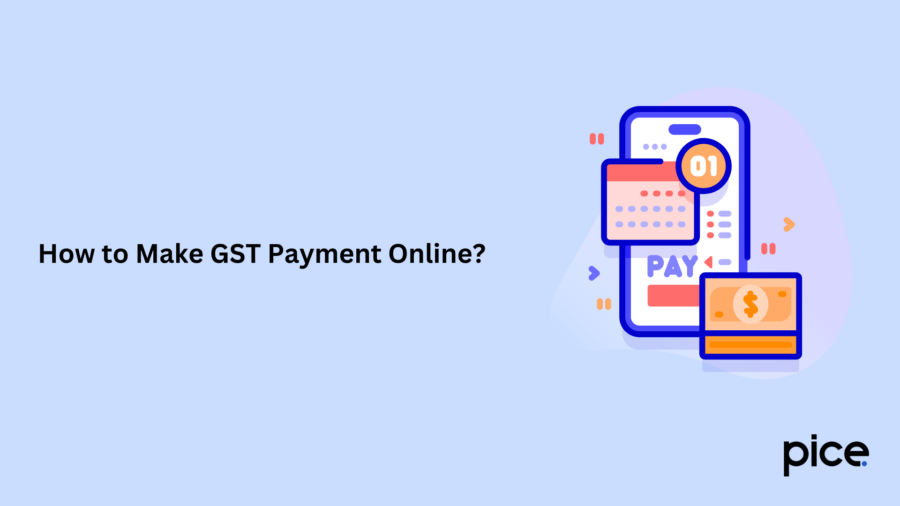
To settle a GST challan online, you have to follow these steps:
Step 1: Visit the Unified Portal
Visit the official GST website.
Step 2: Navigate to the 'Payments' Section
For this, first locate the ‘Services’ tab and then click on the ‘Payments’ option provided in the dropdown menu.
Step 3: Click on 'Create Challan'
Under the ‘Payments’ head, you have to select the ‘Create Challan’ option.
Step 4: Enter GSTIN Number
After clicking on ‘Create Challan’, the system will prompt you to provide your GSTIN number. After entering the number, select ‘Proceed’.
Step 5: Fill in Challan Details
Here, you must mention the type of tax payment you are furnishing. This can be CGST, SGST, or IGST. Additionally, you have to enter other necessary information as specified. Before proceeding, check whether you have addressed all the blank fields appropriately.
Step 6: Choose a Payment Method
After providing the details, select among the valid modes of payment. GST challan payments can be settled via different modes, like bank credit/debit cards, net banking, or OTC payments via authorised banks.
Step 7: Make the Payment
You are redirected to a secure payment gateway while transferring the fund to an electronic cash ledger. All you have to do is enter the amount and other payment details. Then, enable the necessary actions to finalise the transaction.
Step 8: Generate Challan Counterfoil
After a successful payment, a Challan counterfoil is generated. For your own records, download a soft copy of this counterfoil and store it on your device. It may later on come in handy as the payment proof.
Step 9: Tracking GST Payment Status
To verify whether the payment has been processed properly, open the ‘Track Payment Status’ menu on the official website. Next, type in the Challan Identification Number (CIN) to track the status.
How to Make Offline Payment of GST Challan?
The conventional offline method of paying a GST challan offline has been described below:
- Collect a GST Challan
- Open the official GST website and sign in to your account using the login credentials.
- Navigate to the ‘Services’ tab to choose ‘Payments’ and then click on the ‘Challan’ button.
- Provide a few necessary details, like the type of tax you are about to pay, the due amount, and other related information.
- Click on ‘Generate Challan’.
- Save a Copy of the Challan and Take a Printout
You must download a copy of the challan. Again, you can re-check the details that you have already filled out online.
- Visit an Authorised Bank’s Branch
Carry your printed challan to the bank you will be visiting. There are a few exclusive banks that are authorised by the GST Council to accept GST challan payments.
- Submit the GST Challan to the Relevant Authority
While submitting the challan, you can pay in cash, demand draft, or cheque at the bank deposit counter. In return, the recipient will provide you with an acknowledgement slip as payment proof.
- Check the GST Challan Payment Status
To do this, re-open your GST account online. Next, you have to click on ‘Services’ followed by ‘Payments’ and then select ‘Track Payment Status’. Next, as soon as you feed in the CIN, you can be confirmed about the payment status.
How to Check GST Challan History?
Here are a few simple steps to verify and retrieve a challan history via the GST platform:
Step 1: Open the common portal and enter your username and password to log in to your GSTIN account.
Step 2: Next, click on ‘Services’ and then ‘Payment’ from the dropdown list.
Step 3: Click on the 'Challan History' option to get a detailed description of the previous transactions.
In this way, you can manage your GST challan payments anytime from anywhere.
What Is the Time Restriction to Complete the GST Payment?
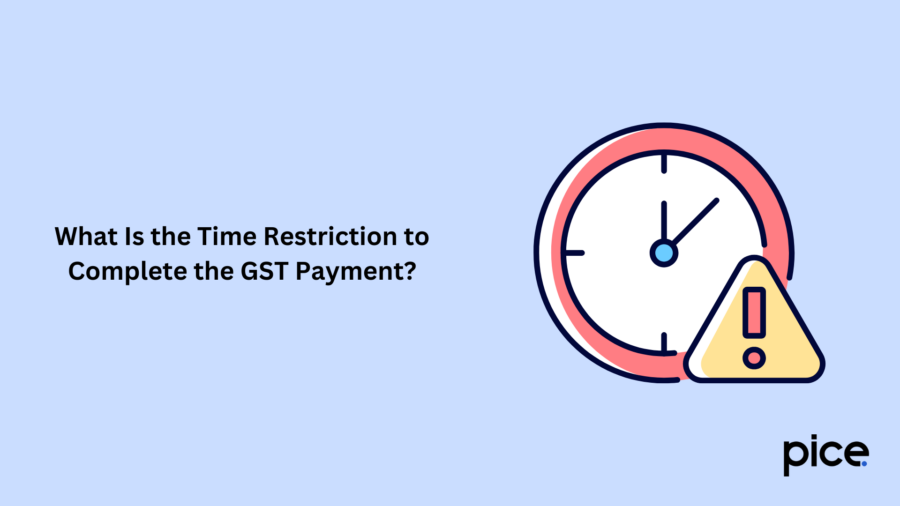
When making payments towards the GST Council, it is crucial to be aware of the time limit. The due dates are often considered from the date you draw a challan. Here are the points to remember:
- If you are paying offline, you should complete the payment within a validity period of 15 days of drawing a payment challan.
- For online taxpayers, payments need to be settled immediately when the challan is being generated.
Interest on Late Payment of GST
According to the GST Act, late payment of taxes attracts several additional charges. You can take a look at the following segment to determine how all these work:
- Rate of Interest on Late GST Payment
An 18% interest per annum is imposed on the due GST amount whenever you delay the outstanding payment of tax for a particular tax period. In addition, you are subject to a 24% interest per annum if you claim excessive input tax credit (ITC). If you intend to reduce your tax burden by unfair means, a 24% additional interest may apply.
- Interest Calculation
The Council calculates the applicable interest in the following manner:
Interest = Due Tax * (Rate of Interest / 100) * (Days Delayed / 365)
Now, for instance, let's say there is a pending GST amount of ₹25,000 and the person is 15 days late in paying it. In this case, the interest would be:
25,000 * (18 / 100) * (15 / 365) = ₹184.93
- Applicability of Interest
Interest is added by the GST Council only when you cause a delay in paying the due sum or when you avail the allowed ITC wrongly.
Conclusion
To end with, a timely GST challan payment can help you avoid legal issues and maintain a healthy business and financial standing. Therefore, you must keep yourself updated with the latest official notifications and also learn the payment steps thoroughly to boost efficiency while paying taxes. It will help your business flourish seamlessly and support a sound economy.
💡If you want to streamline your payment and make GST payments, consider using the PICE App. Explore the PICE App today and take your business to new heights.
 By
By 







